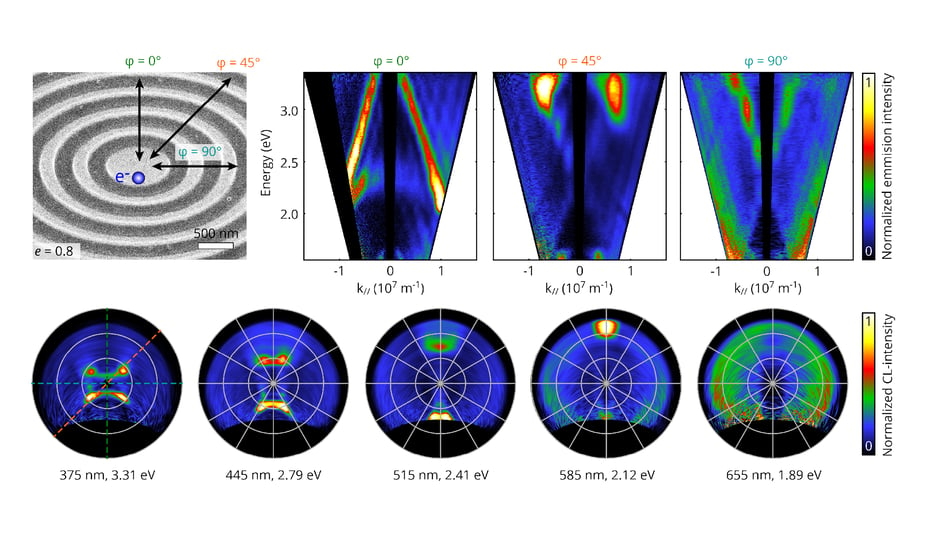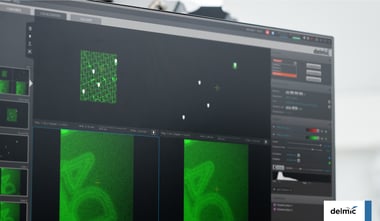There are three main directions in which cathodoluminescence microscopy advances:
- correlating CL in a novel way with other techniques
- increasing the performance, as well as analyzing CL in novel ways
- automating processes (for example, acquisition and data analysis)
One of the newest techniques that was introduced last year is lens-scanning energy-momentum CL imaging [1]. In this technique the spectral resolution of angle-resolved imaging is advanced. This technique allows to acquire both high resolution and angular information, which can be especially valuable in the fields of nanophotonics and nanostructured semiconductors.

Another recently developed technique allows to measure phase. This technique has been developed and published by groups from Japan and the Netherlands [2,3]. By using polarimetry, it’s possible to measure the polarization state of light (e.g. linear or circular), however, it’s not possible to directly deduce absolute phase of a wavefront. To overcome this, the papers propose to use transition radiation from a sample as a reference source to perform CL holography.
Another field in which a lot of progress has been made recently is time-resolved CL imaging. With this technique it’s possible already to perform decay trace imaging, g(2) imaging (with the LAB Cube module) and time-correlated single-photon counting. Even newer developments in time-resolved CL allow to perform hyperspectral lifetime imaging with the streak-camera, and to do the pump-probe CL imaging.
 The next step of advancing the technique is improved automation, which can be used for data analysis, system operation and alignment and data acquisition. Particularly automated acquisition is very useful for imaging large datasets.
The next step of advancing the technique is improved automation, which can be used for data analysis, system operation and alignment and data acquisition. Particularly automated acquisition is very useful for imaging large datasets.
Finally, Delmic is currently working on a new table-top cathodoluminescence system, which will be available to a wide range of users. We are going to share more information about this system in 2021, so stay tuned!
References
[1] Energy-Momentum Cathodoluminescence Imaging of Anisotropic
Directionality in Elliptical Aluminum Plasmonic Bullseye Antennas, T. Coenen et al. ACS Photonics 6, 573-580 (2019)
[2] Cathodoluminescence Phase Extraction of the Coupling between Nanoparticles and Surface Plasmon Polaritons. T. Sannomiya et al. Nano Lett. 20. 592-598 (2019)
[3] Phase-Resolved Surface Plasmon Scattering Probed by Cathodoluminescence Holography. N. Schilder et.al. ACS Photonics 7, 1476-1482 (2020)
.png)






